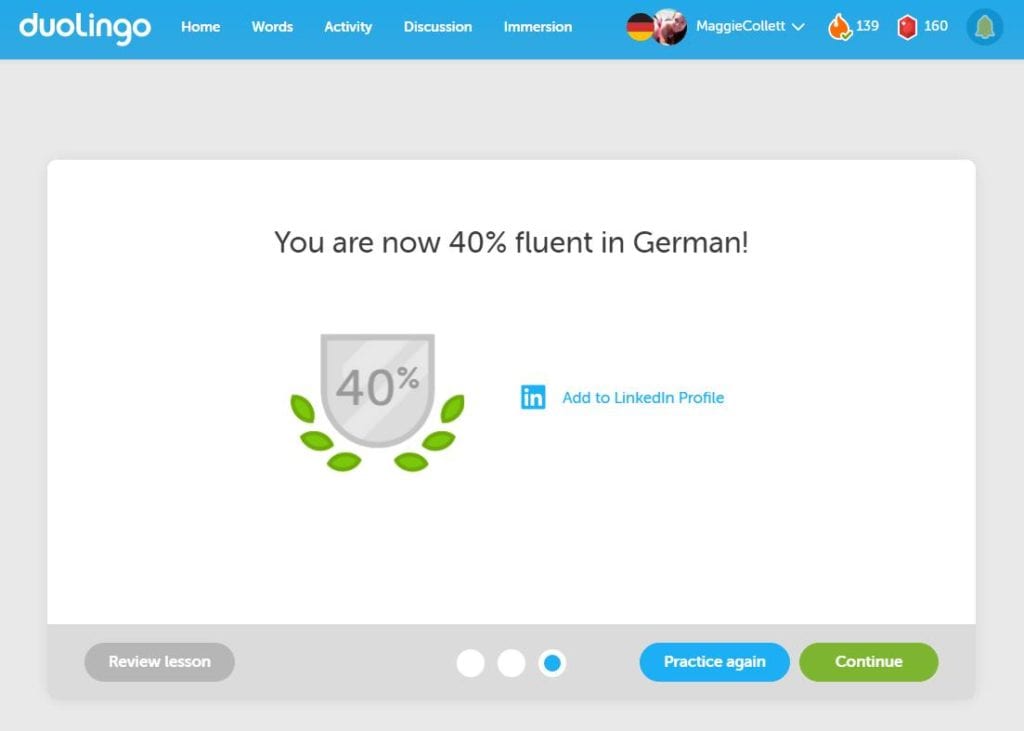11 Useful Tools to Make Learning a Second Language Easy
Anyone who has tried learning a second language knows how difficult it can be. Most of us have to take foreign language classes in elementary or high school but stop after that (or at least I did). I took Spanish all throughout elementary and high school but it never quite stuck. Our school was going through changes at the time and teachers were filtering through. I gave up the fight after moving on to college.
In the spring of 2013, though, I studied abroad in Salzburg, Austria where they speak German. While there, I took a German class in the traditional classroom setting and learned a lot more than I expected to. I also got pretty attached to the German language. Despite everyone’s jokes about how angry German sounds, I find it beautiful and challenging. Since then, I have been trying to learn German on my own and have come across many tools that have helped me along, and I’m going to spread the love. So let’s get this party started!
1: Duolingo
Duolingo is probably my favorite website/app that I’ve found in my pursuit of learning a second language. I most often practice on the app but occasionally also hop onto the site. Duolingo almost feels like a game and uses various activities to help you learn including speaking, listening, and writing activities. The whole goal of Duolingo is to ultimately translate the entire internet into multiple languages so once you’ve got some learning under your belt, you can go in and translate articles (don’t worry, other people check it before it goes live so if you mess up, you’re not at fault).
I’m also highly motivated by the daily streak. It’s like a competition against myself. Since this photo was taken, I’ve actually blown that killer 139-day streak, and now I’m only at ten days. But it’s super exciting to know that you’ve been practicing your new language so faithfully!

2: Memrise
Similar to Duolingo, Memrise focuses more on vocabulary. I would suggest picking either Duolingo OR Memrise as using both confused me (they were teaching me different things at different speeds and I got all mixed up). I do like how Memrise keeps track of how many words you’ve learned – it’s cool to think that you know 85 new words in a foreign language!
3: Simbi
Simbi is not exclusively a language learning tool but certainly comes in handy. Simbi is a site where people can exchange services for services. As a graphic designer and writer, I’ve traded with people for free yoga lessons, free dog training advice, etc. There are many people on Simbi who offer language classes or translation services so you would have a one-on-one tailored lesson. Even if you don’t have any tradeable skills (although people get on there and trade things like telling jokes), you can “pay” in Simbi, a non-monetary currency.
4: Children’s books in your new language
As silly as it might feel, buying children’s books in the language you are trying to learn is an excellent way to practice. The verbiage in children’s books is relatively simple and easy to understand. I mean, when we’re little and learning English we don’t just jump straight into textbooks and newspapers so why should you do that in your new language?
5: HelloTalk
HelloTalk is a snazzy little app that lets you connect with real people who are also trying to learn new languages. You can chat with other users and help correct each other’s grammar. Your conversation might be half in English and half in German, and that’s the cool part! There are built-in translation tools and other cool features like using talk-to-text so that you can also get speaking experience in your new language. Because I speak English as my first language and am trying to learn German, HelloTalk shows me users who speak German as their first language and are trying to learn English. That way we both reap the benefits of having a native speaker correct us! Awesome!
6: Pen Pals
I don’t know about you, but writing something down is the best way for me to remember it. All of these online tools are great, but a good ole fashioned pen pal is another great way to get experience in a new language. The website GlobalPenFriends.com is a great starting place for getting a pen pal. You can look for someone who is trying to learn English and speaks the language you are seeking to learn so that it’s mutually beneficial!

7: Google Translate
An article about learning a new language just wouldn’t be complete without Google translate. I use Google translate mostly when I’m trying to find the right vocabulary word and can’t remember the translation. Google Translate’s sentence structure isn’t always correct, and it can use the wrong forms that might embarrass you (for example, entering the phrase, “I am hungry,” in Google Translate for German produces “Ich bin hungrig,” which actually means, “I am horny.” Awkward.) but it’s great to use as a dictionary of sorts. Plus the app is convenient and quick when you’re trying to navigate around a new place.
8: TripLingo
This nifty app is aimed at the people who are taking a trip to an international destination and need to know a few key phrases. It also comes in handy for someone who is trying to learn a language but maybe needs a little extra confidence in their hand when it comes to moments like asking for directions. TripLingo also has a snazzy little feature that lets you take a picture of a menu or sign, and it will translate it instantly!
9: Traveling
I hate to be Captain Obvious here but traveling truly is the best way to help when learning a second language. When I was studying in Austria for four months, I progressed super quickly through the language simply because I was forced to use it every day. Plus, locals are always willing to help you out. In restaurants, servers would often switch to speaking English when they saw that we were speaking English, but I would always say, “Auf Deutsch, bitte. [In German, please],” to practice more. Immersion is a fantastic way to learn quickly plus you get to see the world. Win/win.
10: AnkiApp
Learning vocabulary is a necessary evil of learning a new language and this app helps. AnkiApp is a flashcard service that you can practice whenever you’ve got a minute. There is a bunch of free content built right in so you don’t have to worry about creating your own flashcards. Wham bam thank you, ma’am.
11: (How to) Pronounce
As an Android user, I sadly can’t use this little gem, but it looks legit. (How to) Pronounce doesn’t necessarily “teach” you anything. Instead, if you’re struggling with the pronunciation of a phrase you can enter it into (How to) Pronounce and it will say it out loud for you. I WISH I could download this because let me tell you….German pronunciation can be a bear. Anyway, if you’re rocking on an iPhone, give it a shot!
So there you have it. There are so many useful tools and apps for learning languages, and I have only scratched the surface with this list. Are you learning a second language? What are your favorite tips and tricks? Leave your favorites in the comments below!









